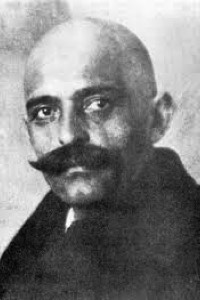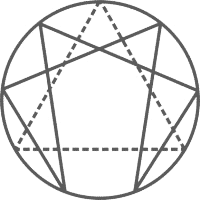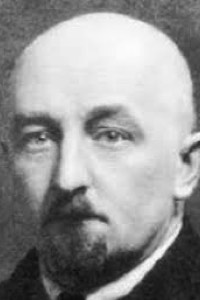



GEORGES IVANOVICH GURDJIEFF (1866-1949)
THOMAS ALEKSANDROVIC DE HARTMANN (1886-1956)
This CD presents music written by two composers, Georges Ivanovitch Gurdjieff and Thomas Alessandrovich De Hartmann; a unique partnership, all the more interesting if one considers that they both came from different musical backgrounds and culture.
Gurdjieff was born in 1866 in Alexandropolis, on the border between Armenia and Turkey, in a Caucasian region that is the crossroads of many ethnic groups. His father was a cantor, one of those unique figures who, on the audiences’ request, would narrate in verse the great ancient myths of their culture. During his youth in Kars, family experience was the basis of Gurdjieff’s studies. He sang regularly in the choir of the Russian Orthodox Church. The deacon of the Cathedral, struck by the sharpness of the boy’s spirit and by his talents, trained him also in the religious and scientific fields. Together with a group of friends, he took part in various expeditions to Asia and to the Arabian Peninsula in search of ancient knowledge and tradition. During his visits to religious groups in remote monasteries, he was given the opportunity of learning more about psychology, sacred art and ritual dance. Twenty years later, in 1912, Gurdjieff returned to Europe, where he presented a new teaching: a non-religious path toward the inner evolution of man. Various generations of disciples gathered around his doctrine and his beliefs found strong echo in the work of Renè Daumal, Alexander de Salzmann, P.D. Ouspensky, Frank Lloyd Wright, Pierre Shaeffer, Peter Brook and T. De Hartmann himself.
Born in Ukraine in 1886 into a family of German origin, De Hartmann studied harmony and composition with Anton Arensky, a student of Rimsky-Korsakov, counterpoint with Aleksandr Sergeevic Taneev, and piano with Annette Essipova, an excellent concert artist and valued teacher who had invented a performing technique based on the perfect balance of the hand and the agility of each finger. The teacher applied a rather peculiar method to obtain her goal: she would lay a silver coin on the back of the student’s hand: if the coin didn’t fall during the performance, the student could keep it. At the age of 18, in 1903, De Hartmann graduated from the college of music of St. Petersburg. The success of The Scarlet Flower, a composition for ballet which he wrote at the age of twenty-one, brought him early celebrity and a wide range of artistic connections. Having moved to Munich, where he studied orchestra conduction with Felix Mottl, he met Vassily Kandinsky, with whom he began an intense exchange of ideas. In 1912 he wrote the short essay "Anarchy in Music" which later appeared in the volume Der Blaue Reiter, by Kandisnky himself and Franz Marc. It proved to be one of the major manifestos of XXth century art. Keen on understanding the various bonds that connect different forms of artistic expression, De Hartmann was gifted in his research by an extremely free and unconventional spirit. Back in St. Petersburg, in 1916 he met Gurdjieff, who was to have a great influence in his life.
In 1917, due to the social turmoil caused by the October Revolution in Russia, DeHartmann decided to follow Gurdjieff on an adventurous voyage which lead them to Constantinople by crossing the Caucasus. The trip was a decisive experience for both of them. Following in Gurdjieff’s path, the Russian composer was not only able to assimilate the nature of oriental music, but also began to compose the musical accompaniment to sacred dances created by the Caucasian master.
In 1922, Gurdjieff established his institute in the Priory of Fontainebleau, near Paris, where he also dedicated his time to writing and choreograpy. After returning from a trip to America, he had a serious car accident; his long convalescence allowed him to intensify his musical partnership with De Hartmann, who had followed him to France with his wife. Between July 1925 and May 1927 the two men composed approximately 300 pieces inspired by the reminiscence of sacred music and traditional oriental melodies. Gurdjieff believed that the characteristics of certain cultures were stored in and revealed by their music; that the music was a transmission of non-verbal knowledge. Gurdjieff’s incredible memory helped him recreate the rhythm and melodies, sometimes in minute detail, that he had listened to during twenty-five years of pilgrimage in Asia. It was very demanding work: while Gurdjieff brought out the main keys and melodies "by whistling them or at times hinting at them on the piano", De Hartmann was engaged in a major effort of translation, interpretation and the first draft arrangement.
This is what De Hartmann remembers: "While listening to him play, I had to scribble down at feverish speed the shifts and turns of the melody, he often repeated only two notes. But which was the rhythm? How to mark the accentuation? Often it proved impossible to use western technique ... at times the flow of melody... could not be interrupted or divided by bar-lines. And the harmony that could support the Eastern tonality of the melody could only gradually be defined ".
Capturing the melody and transcribing it according to European musical notation standards required a great effort. The resulting compositions show a harmony that is suggested by the melodic intervals themselves. Between the melody and the accompaniment there was a peculiar rhythmical interaction. This caused many tempo variations even just within a few bars, while the tonal systems originated from a particular division of the octave, quite unfamiliar to the western ear. The short length of the pieces, furthermore, left little space to detailed description. Finally, the heterogeneity itself of the two composers is what enriches our insight towards the profound sense of music. Gurdjieff died in Paris on the 29th of October 1949. De Hartmann died on the 26th of March 1956 in New York, on the day before an important performance at Carnegie Hall.
Hidden Sources by Gurdjieff & de Hartmann
All rights reserved © 2020 KHA.IT s.r.l.
